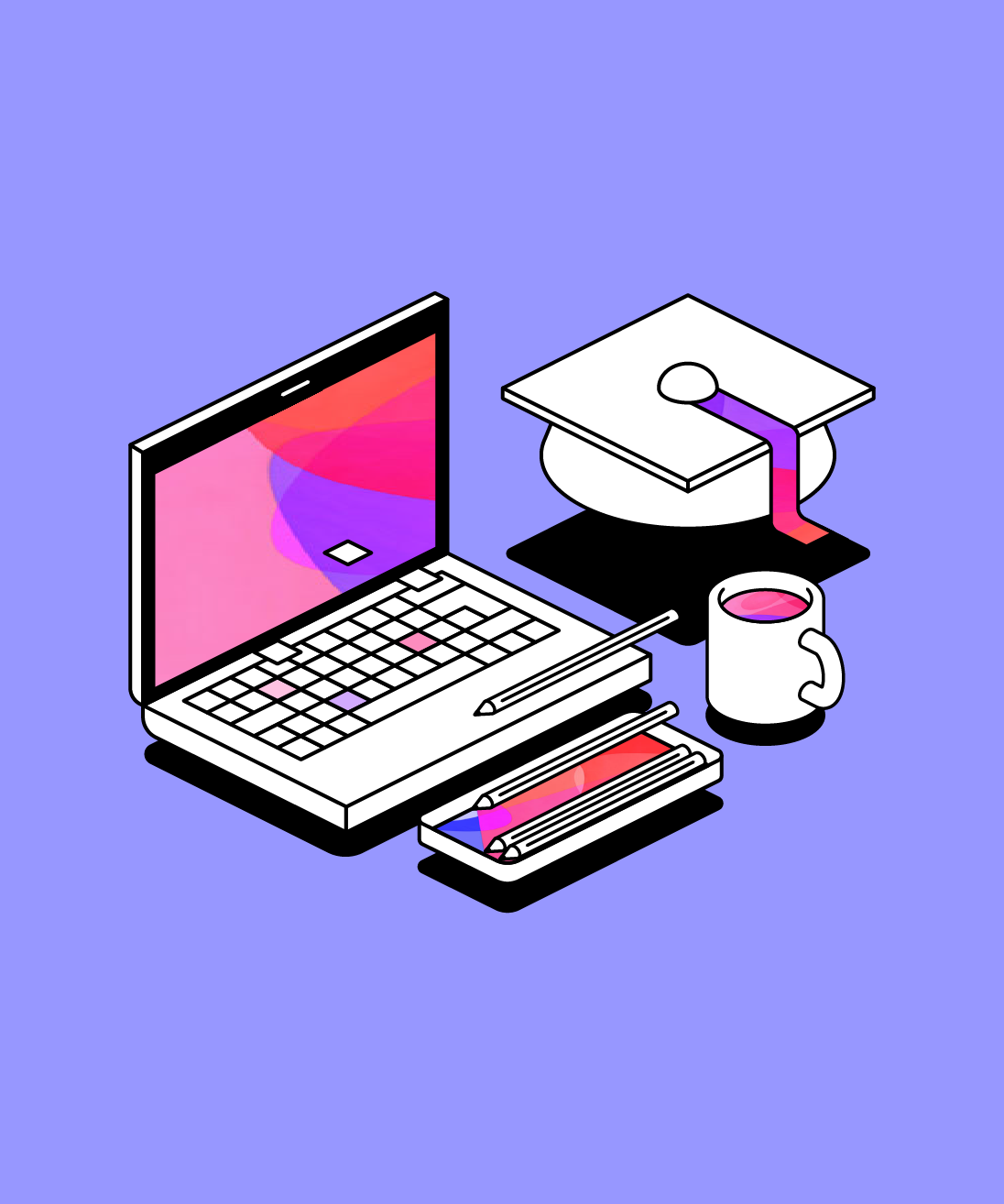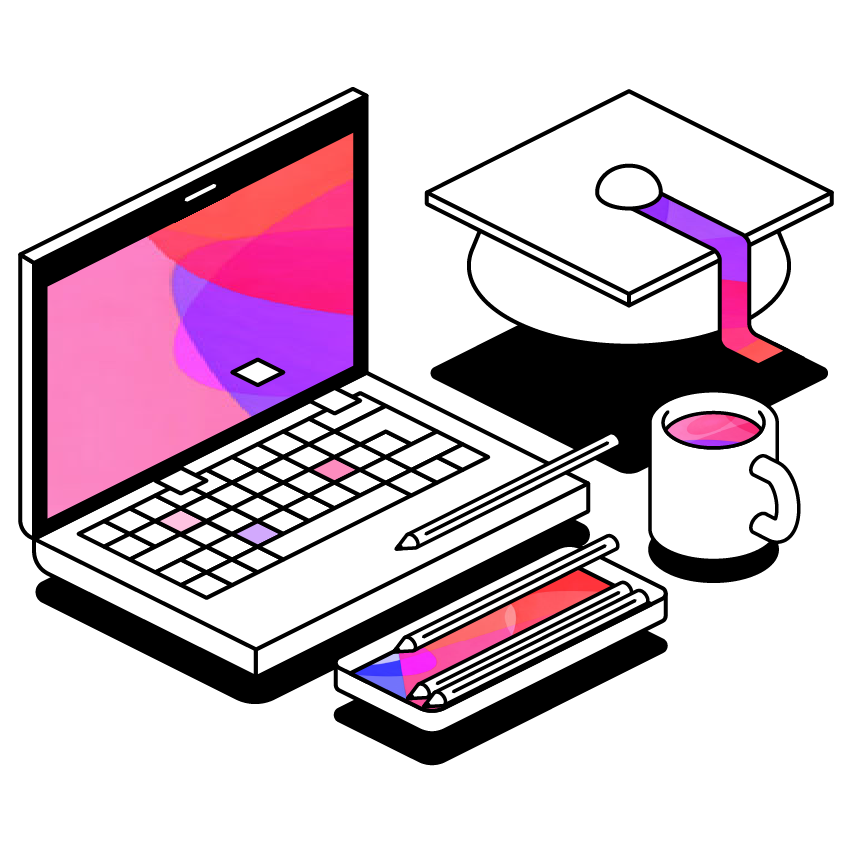Productive friction and the future of learning: An AI driven approach
AI will not replace education. But it continues to reshape the foundations and fundamentals. Here, Genio's Chief Technology Officer, Josh Nesbitt, explores how to find the right balance for an AI driven learning future.
 5 min read
5 min read
 Published: 7 Jul 2025
Published: 7 Jul 2025
 Josh Nesbitt
Josh Nesbitt


Education is at a critical inflection point. The emergence of AI, particularly large language models (LLMs) and machine learning-driven tools, has reshaped what it means to teach and to learn. These technologies can take notes, generate ideas, and complete entire online courses in minutes. The implications are vast and continue to be discovered.
This transformation is accelerating a shift that was already underway. Traditional models of education, built around passive consumption and “sage on the stage” instruction, are giving way to project-based learning, authentic assessments, and real-world problem solving. Other forms of demonstrating knowledge that go beyond rote memorization are also on the rise including oral assessments and portfolios.
Colleges are on a quest to increase gainful employment and make attaining a higher education qualification mean something again. The question isn’t whether this change is coming - it’s whether students, educators, and institutions are ready for it. Are we prepared to evolve not just our tools, but our understanding of meaningful learning in an AI-powered world?
Arguably, students are leading the way, pushing the boundaries of supportive tooling and assistance to get work done. A HEPI survey found that 92% of undergraduates are using AI, and while 76% of institutions say they could spot AI in assessments, only 36% of students are being supported to develop AI skills.
To move forward, we must recognize that using AI in learning is not bad, as not all friction in learning is bad. Some friction - the kind that challenges us to reflect, revise, and wrestle with complex ideas - is essential. This is what we call productive friction, and it’s what truly drives learning.
AI can help reduce the friction that slows learners down while preserving the friction that helps them grow. Consider note taking; having AI transcribe notes removes the stressful friction of scrambling to write everything down, overcoming an ineffective approach to increase engagement. Using AI to summarize and organize those notes, however, removes a critical step in the learning process that’s proven to improve comprehension and retention.
Developing skills for future success
For years, educators and employers alike have emphasized the need for “21st-century skills”: creativity, critical thinking, and adaptability. But these aren’t futuristic capacities, they’re ancient human abilities, needed more now than ever before. The rise of AI hasn’t created this demand, it’s simply made it impossible to ignore.
Developing these skills in today’s learners means helping them understand not just content, but process. It means preparing them to interact with AI in ways that enhance their thinking rather than replace it. We don’t need learners who can passively consume machine-generated answers, we need learners who can interrogate, refine, and build upon them.
There are already powerful ways to make this interaction meaningful. Students can use AI tools to quiz themselves, identify knowledge gaps, or test their understanding. They could be asked to submit the prompt they used to generate an AI response, explain their rationale for using it, and critically evaluate the output. Some institutions have released guidance on how to cite AI, making the learning process more transparent, reflective, and active.
These aren’t hypothetical scenarios; they’re emerging practices that reflect a new model of learner agency. The student is not just the recipient of knowledge, but an active participant in its construction. AI becomes a partner in exploration, not a shortcut to completion.
We must ensure the fundamental concepts of learning are prioritized in this model. Just as AI systems benefit from human oversight in fields like medicine or ethics, learning systems benefit from keeping the learner actively involved. It’s the difference between using AI as a gym - a place for training, challenge, and growth - or as a diet pill, a way to bypass effort in the hope of fast results. One builds skill, the other builds dependency.
Addressing key challenges to learning
While the potential of AI to enhance learning is immense, so too are the challenges facing today’s learners. The “New Majority” of higher education students includes adult learners, first-generation college attendees, and learners with disabilities or neurodivergence.
These students bring a wealth of experience, but they also face unique barriers. Three challenges stand out across this population: lack of time and attention, lack of preparedness, and individual barriers.
First, many learners today are time and attention poor. Between jobs, caregiving responsibilities, and social media exhaustion, they need learning experiences that are efficient and focused. This is where AI can reduce unproductive friction, by helping students quickly take notes or test their knowledge, so they can spend their limited time on deeper learning.
Second, learners feel underprepared. This is not because they lack ability, but because they haven’t been taught how to learn effectively. Interacting with AI tools is not always intuitive. Learners need support in understanding how to use these tools wisely: how to frame questions, interpret outputs, and apply the results to their own work. There are more severe barriers to learning in a digital context, where digital poverty and exclusion block learners from ever accessing this new toolset.
Third, there are significant individual barriers tied to accessibility. For ESL students, AI can offer real-time translation or explanations in simpler terms. For disabled or neurodivergent learners, AI can provide multimodal content or flexible pacing. But accessibility must be baked into the design, not bolted on afterwards. Accessibility overlays exist as proof that insufficient care has been taken to consider the true user needs as a core part of design.
One often overlooked aspect of equity is access to opportunity. While there is growing rhetoric around AI “democratizing education,” not all learners benefit equally. Many AI tools remain behind paywalls. Others require high-speed internet or modern devices. Digital poverty, along with environmental and ethical concerns, must be part of the conversation. True equity means addressing these structural gaps.
How to make learning more equitable
To build a more equitable learning landscape, we must start with how AI tools are developed.
First, equity must be embedded in the design process itself. This means adopting a learner-centred approach to development. It means consulting with diverse student groups, conducting rigorous usability testing, and grounding decisions in proven learning science. It also means measuring what matters: not just time spent on a platform, but real outcomes like improved knowledge, skills and confidence.
Technology companies have a responsibility to do more than build flashy tools. They must ensure their products actually support learning. That means listening to learners, not as users or customers, but as partners. It means iterating based on feedback, being transparent about limitations, and continually asking: is this tool making learning more accessible, more effective, and more empowering?
Equally, institutions have a responsibility to co-create tools that support the curriculums they design. Their real-world view of how learning happens in practice is an invaluable perspective for those designing new products or processes for learning that resonate with the learner.
Second, equity depends on how these tools are used in the classroom or learning environment. Are students encouraged to passively accept AI outputs, or to actively question and refine them? Are they taught how to use AI to scaffold their own thinking, or are they left to sink or swim? This questioning alone can help open up valuable conversations to better understand the role AI has to play in learning.
This is where productive friction becomes a guiding principle again. Learners must be challenged, not bypassed. AI can help identify weak spots, prompt reflection, or simulate dialogue but the learner must stay in the loop. Passive consumption breeds dependency; active engagement builds capability.
We should also resist the temptation to frame this shift as entirely individual. Equity isn’t just about giving each student a better experience. It’s about redesigning systems so that every student has the opportunity to thrive. That includes affordable access, inclusive interfaces, and transparent algorithms.
As educators and technology developers, we must move beyond the idea that “access” alone is enough. True equity lies in agency: giving learners the tools, the guidance, and the autonomy to shape their own learning journeys.
From friction to flourishing
AI will not replace education. But it continues to reshape its fundamentals at a phenomenal rate. The path we choose now will determine whether that transformation deepens learning or dilutes it.
The opportunity before us is not to eliminate friction from education, but to distinguish good from bad. To preserve the struggle that leads to growth, but remove the barriers. To build systems that are not just efficient, but inclusive. To keep the learner not just present, but empowered.
The future of learning is AI-driven, and we live in a world where AI is becoming normalized. But it will only be valuable if that AI is grounded in the realities of how people learn and reflects their diversity. If we get that right, we don’t just make education faster; we make it fairer, more human, and more meaningful.
More from Supporting Students
View All
 2 min read
2 min read
How Genio helps STEM students: A preview of the 2026 Learner Impact Report
With our annual Learner Impact Report due to be published in March 2026, we want to share a sneak preview of some of our findings for one group in particular: STEM students.

 5 min read
5 min read
7 tools to consider for the new FIPSE grant
As the U.S. government announces the new FIPSE grant to support innovative, action-oriented projects in higher education, we explore 7 tools that institutions can consider purchasing through their application.

 3 min read
3 min read
The role of AI in scaling accessibility and student success
Discover how institutions are using AI to remove student learning barriers, safeguard data privacy, and redefine accommodations in higher education. Our industry experts share some of the strategies required to confidently implement these new, transformative tools.





